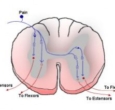When I first saw that TV commercial I thought…

by Michael D. Allen, DC, NMD Functional Neurologist There is a television commercial that stops me in my tracks every time I see it. It’s the one about an ingredient originally discovered in jellyfish. The narrator declares that your brain is an amazing thing, but aging causes the loss of certain brain proteins that leads […]
You and Your Brain Age Because…

by Michael D. Allen, DC, NMD Functional Neurologist Why does this seem to happen in your 30’s? Why do so many people fatigue more easily, lose muscle mass and have more immune issues after they turn 30? Is it from inactivity? Could it be from lifestyle changes? Research indicates that aging affects even those who […]
Healthy Heart Care for Women

by Michael D. Allen, DC, NMD Functional Neurologist A new approach to heart health shows promise. While it is true that aerobic exercise is wonderful for brain function, more may not be better. Aerobic exercise helps use oxygen, and the exercise movements generate signals to the brain that normally keep the heart from beating too […]
Healthy Heart Care for Men

by Michael D. Allen, DC, NMD Functional Neurologist Preventing Heart Attacks: Is Exercise Important? A New Approach Shows Promise While aerobic exercise is appropriate for your heart and circulatory system it can easily be overdone, and you may be setting yourself up for heart troubles. By definition, aerobic exercise requires oxygen, and exercise movements generate […]
Is All Exercise Healthy? A new approach shows promise

by Michael D. Allen, DC, NMD Functional Neurologist Is this you? Do you feel good after your cardiovascular exercise? Upon exertion, does your heart rate jump to your target rate quickly? Do you sometimes go beyond your target rate just to work a bit harder? Does your heart rate get up to 150-160 beats per […]
Nothing is Good About Bad Posture

by Michael D. Allen, DC, NMD Functional Neurologist Virtually every musculoskeletal complaint can be linked to bad posture, and good posture is more than standing up straight. A healthy posture has to do with muscles and how they work together to keep you upright and move against gravity. Standing and moving about on two feet […]
What Makes a Heart Healthy?

by Michael D. Allen, DC, NMD Functional Neurologist The Cardiac Copycat I just treated a retired sheriff. She had a history of heart valve problems and tachycardia (fast heartbeat) so her MD told her to have an ablation (where the doctor burns out part of her heart’s electrical system). As an alternative she was given […]
Why Synchronize Brain Function?

by Michael D. Allen, DC, NMD Functional Neurologist Psychologists have observed that people with learning disabilities process input from their environment differently than those with more “neuro-typical” brains. Many people with learning difficulties just think differently. Giving a person with learning difficulties complicated directions often dooms them to failure. More words require a longer attention […]
Galant Reflex: The Postural Response to Stroking the Lumbar Flank
- Apr, 23, 2015
- thebook+
- Reflexes
- Comments Off on Galant Reflex: The Postural Response to Stroking the Lumbar Flank

The Galant reflex (or Galant’s infantile reflex, named after the Russian neurologist Johann Susman Galant) is commonly observed in newborns and is said to fade between the ages of four and six months. It helps rule out brain damage at birth. Elicit Galant’s reflex by holding the newborn in a face down posture or laying them […]
The Importance of Reciprocity to Human Performance

The Crossed Extensor Reflex (CER; also known as the crossed cord reflex) is a protective response that apparently begins at about the 28th week of gestation and is functionally integrated one to two month after delivery. It is functionally significant in back-and-forth (or reciprocal) muscle actions. Its dysfunction can interfere with activities like running and […]



